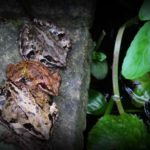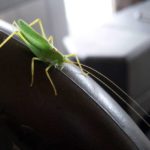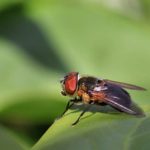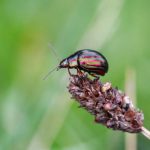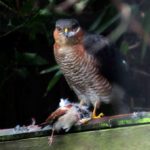Chloë Smith, GiGL Data Officer
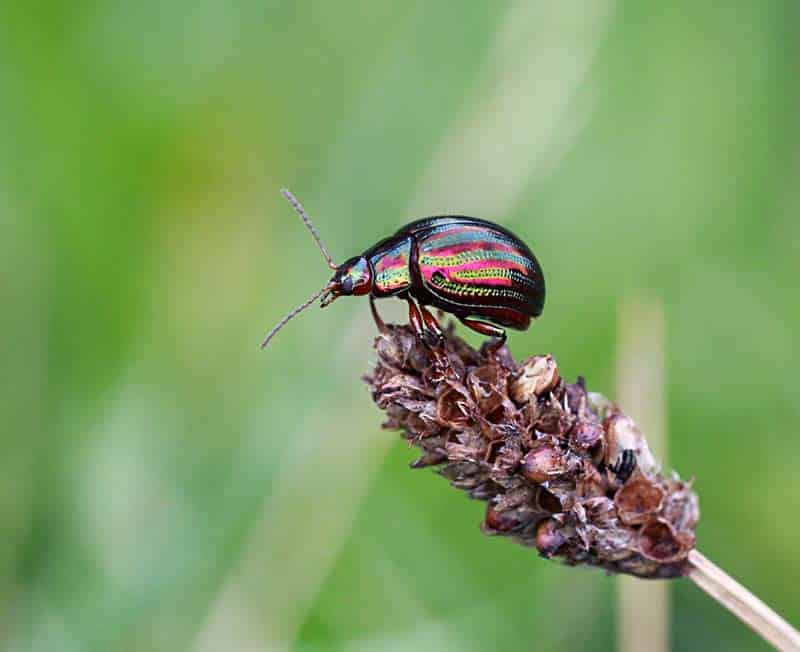
Rosemary beetle recorded in Warwick Gardens | © Penny Frith
Photography is not only a profession and an art form, it is also a popular amateur pastime. The accessibility of photography as a hobby has been greatly increased by the rise of digital technology. The number of magazines, websites and courses available on the subject confirm its popularity. The rapid capture and instant sharing of everyday photographs has been facilitated by mobile phone cameras and social media platforms such as Flikr, Instagram and Twitter.
Photographing plants and animals presents a special set of challenges and rewards. Wildlife photographers must develop a patient eye for animal behavior as well as for composition, and they must overcome the elements as well as mastering the camera. On another level, a quick snap with a camera phone can be a way to share the excitement of a wildlife encounter with others, and in some cases provides clues to the identity of the subject.
GiGL’s online species recording form has been collecting people’s one-off wildlife sightings for many years. Since last summer, recorders have also had the option to upload photographs of their sightings. At the time of writing, ninety-five observations from twenty-five recorders have been accompanied by photographs.
Click to enlarge images.
- Common Frogs in Holloway | © Karen Hall
- Cricket recorded at Snaresbrook Station | © Malcom Parker
- Phasiahemiptera recorded in Warwick Gardens | © Penny Frith
- Rosemary beetle recorded in Warwick Gardens | © Penny Frith
- Sparrow Hawk recorded in a Brockwell garden | © Adam Steinhouse
The range of subjects has been really interesting, and the quality of many images is outstanding. For us office-bound GiGLers, these photographs transform the records they accompany, bringing the data to life and helping us connect with the original encounter. See, for example, the dramatic, if gruesome, photograph of a female sparrow hawk feeding on a house sparrow, or the charming common frogs sitting in an orderly row alongside a garden pond.
To our surprise, considering that records of birds and plants normally dominate recording output, 60% of the photographs received so far are of invertebrates. Moths, butterflies, flies, wasps, bees, spiders, beetles, bugs, dragonflies and damselflies all make an appearance. These include many beautiful close-up portraits of invertebrates from Warwick Gardens taken by Penny Frith. My personal favourite is the characterful acorn weevil striding along with an air of determination. The most photographed species has been the jersey tiger moth, with four different recorders snapping this striking creature in their gardens.
Images and information on parks and green spaces are equally useful. If you would like to tell us about your local space and have photographs to share please contact us.
Many species recorders wonder if a photograph might help them identify a mystery creature. Photographs can help verify identity for a few species but not for many. GiGL don’t routinely use photographs for verification for this reason and we don’t have the capacity or taxonomic expertise to investigate individual images. In cases where you’re unsure of species identity we recommend contacting a local recording group to discuss your sighting with an expert.
There are a few occasions when a photo submitted via our online form has prompted discussion with experts and helped to positively verify a species record. For example, a rather blurry photograph of a monarch butterfly was so characteristic that it was possible for butterfly experts to agree with its identification. The county recorder was able to confirm escapee status of this exotic species and was put in touch with the recorder to discuss the butterfly so it could be added to the London report.
On arrival, uploaded photographs are matched to their record; logical file names really help with this; and we note the location, photographer, subject and date as we save the image. The photographs go into GiGL’s in-house image library and provide us with a valuable resource for communication and education, and generally making things look better. We sometimes use these photographs to illustrate talks, on the website, on our social streams and in newsletter articles. When we use photographs we always credit the recorder/photographer.
Please note: If you don’t want your photograph to be used this way, or shared more widely than within the GiGL team, please email us your images instead and let us know any restrictions on their use.
Like many, Chloë Smith’s early interest in natural history and animal behaviour was reinforced by leafing through beautifully illustrated wildlife books and by watching Sir David Attenborough’s documentaries. She enjoys creative hobbies, and loves nature themed art. She admittedly finds wildlife photography subjects normally elude her, though she enjoys looking for them and taking the odd bad photograph when on holiday.

